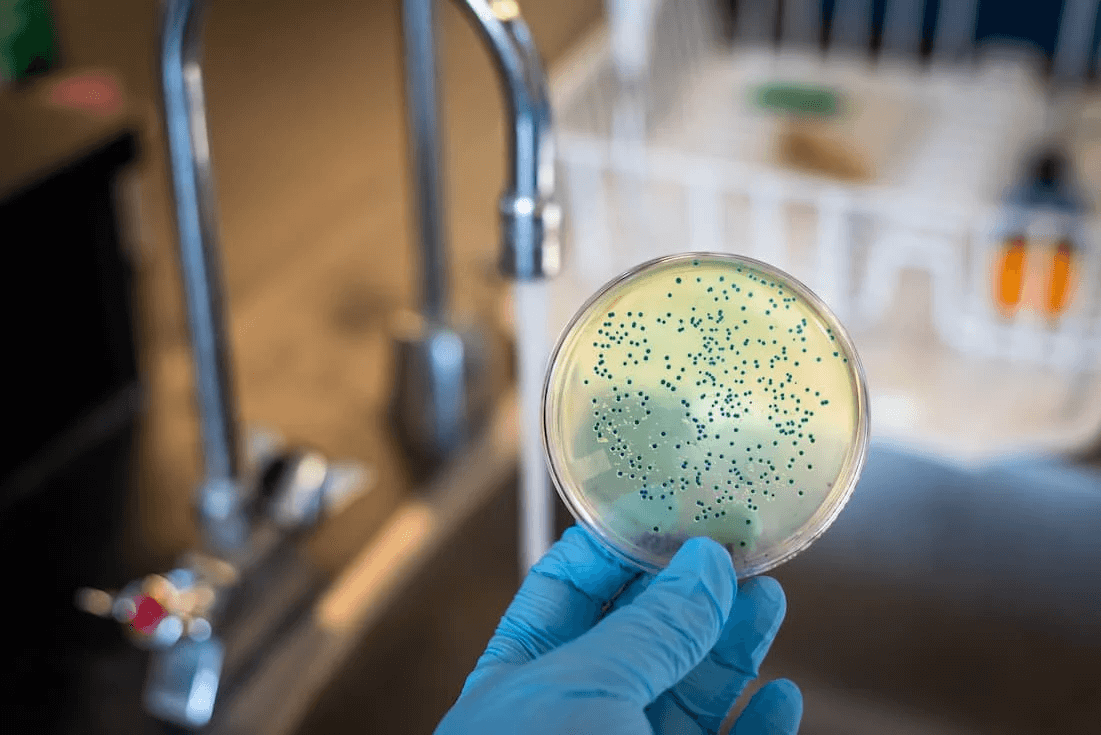Food Safety Practices: Essential Methods to Prevent Biological Hazards
Understand biological hazards in food
Biological hazards represent the well-nigh significant threat to food safety. These hazards include bacteria, viruses, parasites, and fungi that can contaminate food and cause foodborne illnesses. Accord to the centers for disease control and prevention (CDC), roughly 48 million Americans experience foodborne illnesses yearly, result in 128,000 hospitalizations and 3,000 deaths.
The severity of these statistics underscore the importance of implement proper food safety practices to prevent biological contamination. When food handlers understand the nature of these hazards and how to control them, they can importantly reduce the risk of foodborne illness outbreaks.
Temperature control: the critical factor
Temperature management stand as the single virtually effective practice for preventing biological hazards in food. Pathogens multiply speedily in ” ” danger zo” ” between 40 ° f and 140 ° f( 4 ° c to 60 ° c). Keep food out of this temperature range is essential for safety.
Cold temperature control
Refrigeration slow bacterial growth but doesn’t kill exist bacteria. To decent implement cold temperature control:
- Maintain refrigerator temperatures at 40 ° f (4 ° c )or below
- Use refrigerator thermometers to verify temperatures regularly
- Store raw meats on the bottom shelf to prevent cross contamination
- Ne’er thaw food at room temperature; use the refrigerator, cold water, or microwave alternatively
- Refrigerate perishable foods within two hours of preparation (one hour if the temperature eexceeds90 ° f)
Hot temperature control
Proper cooking kill most foodborne pathogens. Effective hot temperature control include:
- Cook foods to their recommend internal temperatures
- Use a food thermometer to verify temperatures
- Maintain hot foods at 140 ° f (60 ° c )or above during service
- Reheat leftovers to 165 ° f (74 ° c )
The follow internal cooking temperatures are essential for food safety:
- Poultry, stuff meats, and reheat leftovers: 165 ° f (74 ° c )
- Ground meats: 160 ° f (71 ° c )
- Pork and ham: 145 ° f (63 ° c )with a ththree-minuteest time
- Beef, veal, and lamb steaks / chops: 145 ° f (63 ° c )with a ththree-minuteest time
- Fish and shellfish: 145 ° f (63 ° c )
Proper handwashing and personal hygiene
Human hands represent one of the virtually common vehicles for transfer pathogens to food. Proper handwashing is a fundamental practice that importantly reduce the risk of biological contamination.
Effective handwashing technique
The CDC recommend this handwash procedure:
- Wet hands with clean, run water (warm or cold )
- Apply soap and lather by rub hands unitedly
- Scrub all surfaces for at least 20 seconds, include palms, backs of hands, between fingers, and under nails
- Rinse exhaustively under clean, run water
- Dry with a clean towel or air dry
Food handlers should wash hands:
- Before start work
- Before handle food, specially ready to eat items
- After handle raw meat, poultry, seafood, or eggs
- After touch the face, hair, or body
- After use the restroom
- After sneeze, cough, or use a tissue
- After handle garbage or dirty equipment
- After any activity that could contaminate hands
Additional personal hygiene practices
Beyond handwash, food handlers should:
- Wear clean clothing and appropriate hair restraints
- Remove jewelry from hands and wrists during food preparation
- Cover cuts or wounds with waterproof bandages and gloves
- Avoid work with food when sick, specially with symptoms of vomiting, diarrhea, jaundice, sore throat with fever, or infected cuts
- Use gloves suitably, change them when they become soiled or tear, between tasks, and after handle raw foods
Prevent cross contamination
Cross contamination occur when bacteria or other microorganisms transfer from one surface to another. This process oftentimes leads to foodborne illness when pathogens from raw foods contaminate ready to eat items.
Food separation practices
To prevent cross contamination between foods:
- Store raw meat, poultry, and seafood in seal containers or packages on the lowest refrigerator shelves
- Keep raw foods separate from ready to eat foods during all stages of storage and preparation
- Use separate cutting boards for raw meats and produce
- Prepare raw and ready to eat foods at different times or in different areas
- Store allergen contain foods individually from other foods
Equipment and surface sanitation
Proper cleaning and sanitizing of food contact surfaces is critical:
- Scrape or rinse food particles from the surface
- Wash with hot, soapy water
- Rinse with clean water
- Sanitize use an approval chemical sanitizer at the correct concentration
- Allow to air dry
Food preparation equipment should be clean and sanitize:
- After each use
- When switch between raw and ready to eat foods
- After four hours of continuous use
- Any time contamination might have occurred
Safe food sourcing and storage
Prevent biological hazards begin with purchase food from approve, reputable suppliers. This practice ensure that food enters the establishment with minimal contamination.
Supplier verification
When source food:
- Purchase from inspect, license suppliers
- Verify that suppliers follow food safety regulations
- Check delivery vehicles for cleanliness and proper temperature
- Inspect deliver items for signs of temperature abuse, damage, or contamination
- Reject shipments that don’t meet safety standards
Proper storage practices
After receive food, proper storage is essential:

Source: fredbever.com
- Follow the first in, first out (fFIFO)method to ensure older products are use before newer ones
- Store food at least 6 inches off the floor and outside from walls
- Label all store food with name and date
- Maintain appropriate humidity levels in storage areas
- Store chemicals individually from food items
- Monitor storage temperatures regularly
Food allergen management
While not biological hazards in the traditional sense, food allergen represent a significant safety concern. Proper allergen management prevent cross contact that could trigger severe reactions in sensitive individuals.
Effective allergen control practices
- Identify and label all allergen contain ingredients
- Store allergenic ingredients individually, sooner below non allergens
- Use designate equipment and utensils for allergen free preparation
- Clean and sanitize all equipment good after prepare allergenic foods
- Train staff to recognize the major food allergen and understand the severity of allergic reactions
- Accurately communicate allergen information to customers
Employee training and food safety culture
All food safety practices depend on proper implementation by food handlers. Comprehensive training and a strong food safety culture are essential for preventing biological hazards.
Training elements
Effective food safety training include:

Source: digicomply.com
- Basic microbiology and foodborne illness information
- Personal hygiene requirements
- Time and temperature controls
- Clean and sanitize procedures
- Cross contamination prevention
- Allergen management
- Symptoms that should exclude workers from handle food
Build a food safety culture
Beyond training, organizations should foster a culture where food safety is value:
- Lead by example, with management demonstrate proper practices
- Provide adequate resources for food safety (time, tools, supplies )
- Recognize and reward good food safety behaviors
- Encourage report of potential hazards without fear of reprisal
- Regularly verify that procedures are being followed
- Update practices base on new information or change conditions
Implement a food safety management system
A systematic approach to food safety provide the virtually comprehensive protection against biological hazards. The hazard analysis critical control point (hHACCP)system represent the gold standard for food safety management.
HACCP principles
The seven principles of HACCP include:
- Conduct a hazard analysis to identify potential biological, chemical, and physical hazards
- Determine critical control points (ccaps)where control can bebe applied
- Establish critical limits for each CCP
- Implement monitoring procedures for caps
- Establish corrective actions when monitoring indicates a deviation
- Verify that the system is work efficaciously
- Establish documentation and record keep procedures
Flush small operations can benefit from apply HACCP principles to their well-nigh high risk processes, specially those involve temperature control, cross contamination prevention, and sanitation.
Conclusion: a multi barrier approach
No single practice can entirely eliminate the risk of biological hazards in food. The virtually effective approach implement multiple barriers to contamination, with each practice reinforce the others.
By combine proper temperature control, good personal hygiene, cross contamination prevention, safe source, allergen management, employee training, and systematic management, food handlers can importantly reduce the risk of foodborne illness.
These practices protect not exclusively customers but besides the reputation and financial stability of food businesses. In the food safety world, prevention is invariably more effective than reaction, make these practices essential for anyone involve in food preparation or service.



